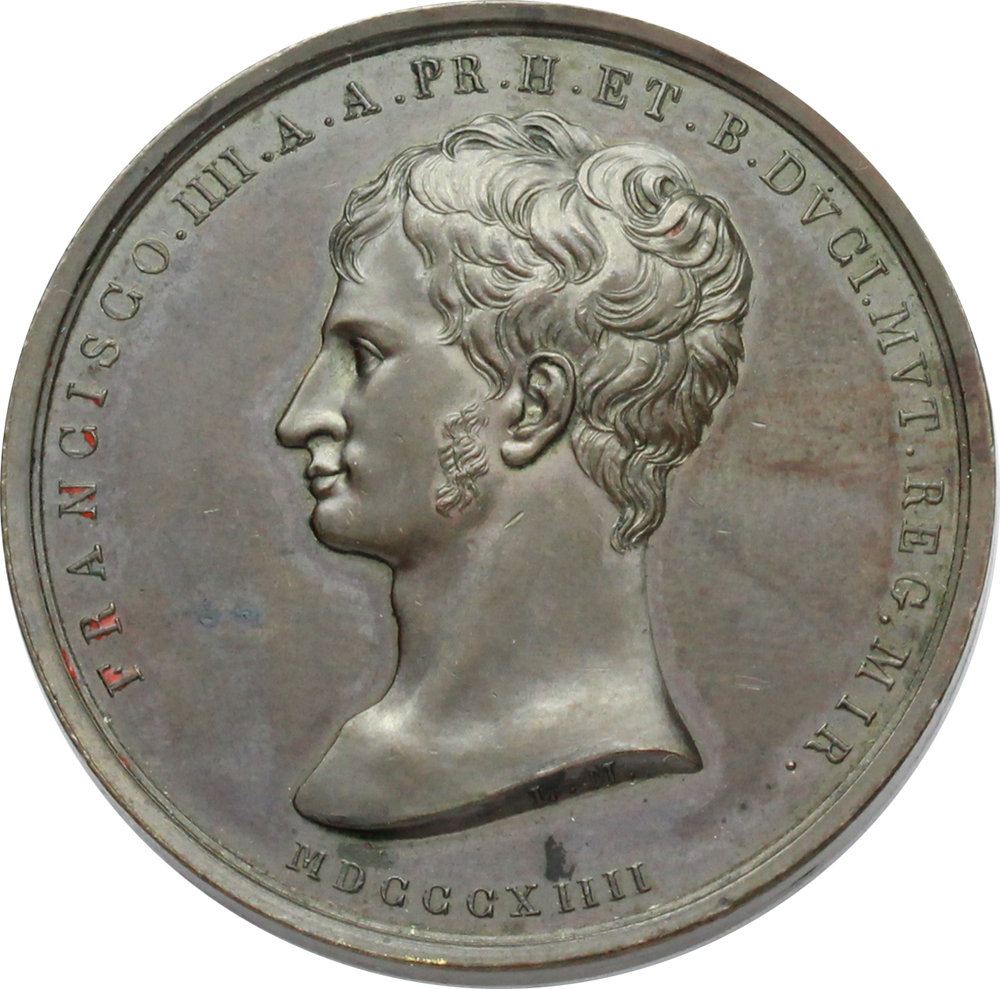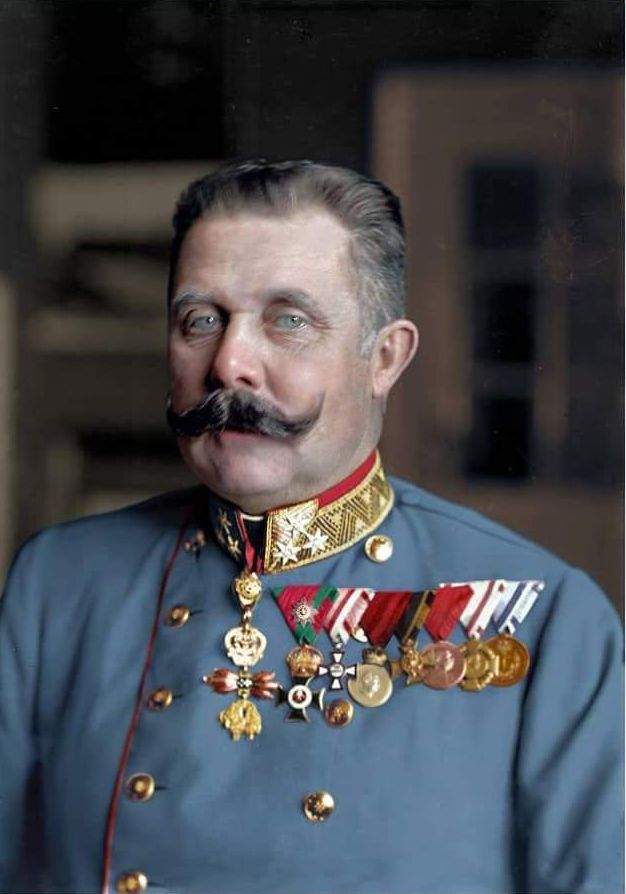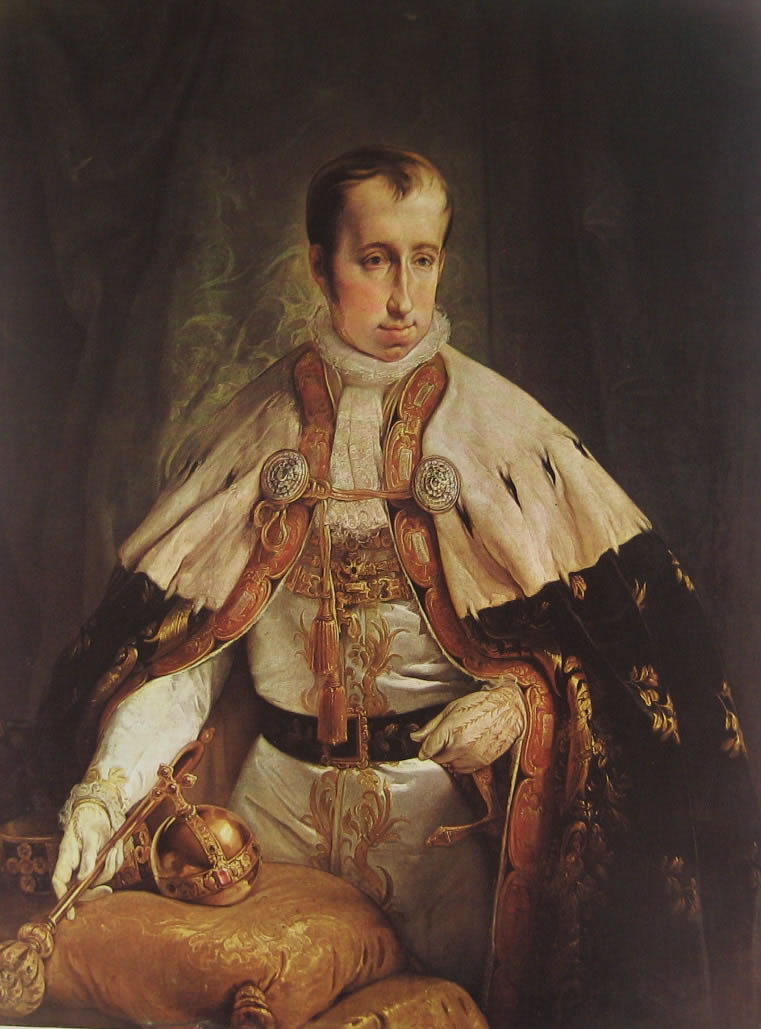celo2112 Francesco Giuseppe I d'AustriaUngheria da Eduard Klieber

Pin di Dan Jackson su Habsburgs Impero, Lorena, Austria
Italiano: Francesco II del Sacro Romano Impero (1768-1835) ultimo imperatore del Sacro Romano Impero Germanico sino al 1806, poi primo imperatore d'Austria, (col titolo di Francesco I ). Latina: Franciscus I Imperator Caesar et imperator semper augustus ab dei gratia. Imperator Austriae et rex Hungariae et Bohemia. Plattdüütsch: Franz II.

Francesco (II) d'AsburgoLorena 52° (e ultimo) Imperatore del Sacro
Archduke Ferdinand Karl Joseph of Austria-Este (25 April 1781 - 5 November 1850) was the third son of Archduke Ferdinand of Austria-Este and of his wife Princess Maria Beatrice Ricciarda d'Este, last member and heiress of the House of Este. For much of the Napoleonic Wars he was in command of the Austrian army. [1] : 206

celo2112 Francesco Giuseppe I d'AustriaUngheria da Eduard Klieber
Francesco IV d'Austria-Este, duca di Modena e Reggio Francis IV Joseph Charles Ambrose Stanislaus edit Statements instance of human 1 reference image Francesco IV Malatesta.jpg 2,207 × 2,895; 1.68 MB media legend Francesc IV de Mòdena amb l'Orde del Toisó d'Or (Catalan) 0 references sex or gender male 3 references country of citizenship

Biografia di Francesco Giuseppe I d'Austria
In general, Mameli maintained that "the Sardinian bread exceeds any other Italian bread in terms of goodness and candidness," while Francesco d'Austria-Este noted that "the Sardinian loves to eat a lot of bread, and only very white bread made of pure wheat." In Barbagia, pane modde is also called 'coccone modde.' The tradition has been.

The Texas Rangers and World War I Texas Ranger Hall of Fame and Museum
FRANCESCO I d'Austria (II come imperatore del Sacro Impero) Carlo Capasso Nacque a Firenze nel 1768 da Leopoldo di Asburgo-Lorena, granduca di Toscana e più tardi imperatore (1790-92). Trascorse i primi anni nel sereno soggiorno paterno e da esso trasse, o forse meglio rafforzò la sua naturale inclinazione a quei concetti di vita quieta e patriarcale che furono, non mai smentiti, i tratti.

In memoriam Francesco Giuseppe I d'Austria, Francisco José… Flickr
Francis IV, Duke of Modena. English: Francis IV Joseph Charles Ambrose Stanislaus (Italian: Francesco IV Giuseppe Carlo Ambrogio Stanislao d'Absburgo-Este) (1779 - 1846) was Duke of Modena, Reggio, and Mirandola (from 1815), Duke of Massa and Prince of Carrara (from 1829), Archduke of Austria-Este, Knight of the Order of the Golden Fleece.

Francesco (II) d'AsburgoLorena 52° (e ultimo) Imperatore del Sacro
Italy. Emilia-Romagna. Provincia di Modena. Modena. Chiesa di San Vincenzo. Francesco IV d'Austria-Este. Created by: Samuel Taylor Geer. Added: 4 Nov 2013. Find a Grave Memorial ID: 119794691.

Sissi and Franz. The Imperial Family of AustriaHungary. Sissi
Francesco I (25 March 1541 - 19 October 1587) was the second Grand Duke of Tuscany, ruling from 1574 until his death in 1587.. Joanna was homesick for her native Austria, and Francesco was neither charming nor faithful. In 1578, Joanna died at the age of thirty-one, after falling down a flight of stairs while pregnant with their eighth.

Francesco (II) d'AsburgoLorena 52° (e ultimo) Imperatore del Sacro
Francesco IV, Duke of Modena and Reggio was born an Archduke of Austria-Este on October 6, 1779, at the Royal Palace of Milan in Milan, Duchy of Milan, now in Italy. Francesco Giuseppe Carlo Ambrogio Stanislao was the fifth of the ten children and the second but the eldest surviving of five sons of Archduke Ferdinand Karl of Austria-Este and Maria Beatrice d'Este, Duchess of Massa and.

Franz Ferdinand , archduke of Austria. News Photo Getty Images
Francesco de' Medici and Joanna of Austria. The prince left for Florence at the end of November 1565, returning to Munich on 2 February 1566, two weeks after his sixteenth birthday, and a detailed diary of the journey was kept by a member of his entourage. I have tentatively identified the diarist as Ferdinand's steward,

Modena. Francesco IV d'AsburgoEste (18141846). Medaglia 1814 per la
Francesco d'Este (14th century) (?-1312), son of Obizzo II, brother of Azzo VIII d'Este, of Aldobrandino and Fresco d'Este Francesco d'Este (1325-1384), son of Bertoldo I d'Este Francesco d'Este (1516-1578) son of Alfonso I d'Este and Lucrezia Borgia Francesco I d'Este, Duke of Modena (1610-1658), son of Alfonso III d'Este

WW1 Picture 50 Photograph of Archduke Franz Ferdinand of Austria
La celebrazione dinastica fu la motivazione primaria delle committenze di Francesco V d'Austria Este (1819-1875), salito al trono agli inizi del 1846, a seguito della morte del padre Francesco IV.

Francesco (II) d'AsburgoLorena 52° (e ultimo) Imperatore del Sacro
Francesco Giuseppe Carlo Giovanni d'Asburgo-Lorena ( Firenze, 12 febbraio 1768 - Vienna, 2 marzo 1835 ), figlio di Leopoldo II, fu l'ultimo Imperatore dei Romani, primo Imperatore d'Austria col nome di Francesco I, Re di Boemia e Re di Ungheria, e ultimo Duca di Milano .

Francesco (II) d'AsburgoLorena 52° (e ultimo) Imperatore del Sacro
Francis II and I ( German: Franz II.; 12 February 1768 - 2 March 1835) was the last Holy Roman Emperor as Francis II from 1792 to 1806, and the first Emperor of Austria as Francis I from 1804 to 1835. He was also King of Hungary, Croatia and Bohemia, and served as the first president of the German Confederation following its establishment in 1815.

Francesco.
Francesco II d'Austria Historical figure Francesco II D'Asburgo Lorena Born in: 1768 - Died in: 1835 Francis of Habsburg-Lorraine was born in Florence, February 12, 1768, by the Grand Duke of Tuscany Leopold II and Maria Ludovica of the Bourbons of Spain.

"Ritratto dell'imperatore Ferdinando I d'Austria" di Hayez
Francesco Giuseppe I d'Austria (in tedesco Franz Joseph I; Vienna, 18 agosto 1830 - Vienna, 21 novembre 1916) è stato un sovrano austriaco.. Fu Imperatore d'Austria, re d'Ungheria, signore di Trieste, dal 1848 re di Boemia.Dal 1850 al 1866 diventò Presidente della confederazione germanica.. Francesco Giuseppe I d'Austria regnò dal 1867 sul nuovo Impero austro-ungarico e fino al 1866 sul.